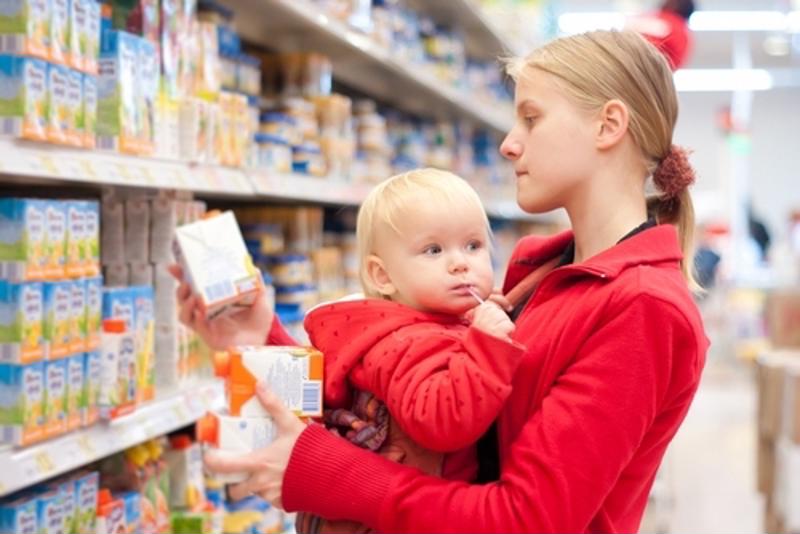It’s increasingly rare to purchase food that is not in some kind of packaging. Unless you are picking your own apples or catching your own fish, it’s very unlikely that your food has not been in contact with some kind of plastic. That’s because polymers are great for keeping food fresh. Plastic allows foods to be transported, frozen, stored, reheated and consumed all in the same container. That’s because by stacking layers of different kinds of plastics, food vendors can create containers, lids, wrappers and films that can keep out everything from oxygen to microbes and even UV radiation. However, as each new material is added to the equation, there is a chance that some particles could migrate from the packaging to the food.
Food spoilage and expiration dates
Everyone knows that food products like milk and eggs are sold with clearly labeled expiration dates. That is because even under the best storage conditions, these food products will eventually spoil. But if you look closely, just about everything at your local grocery store carries some kind of expiration date. Some of these foods may boast remarkably long shelf lives, but that doesn’t mean they’re good forever. For instance, canned beans, a quintessential culinary delight of many post-apocalyptic narratives, are only rated for a shelf life of one year. Likewise, Twinkies, the legendary snack cake that is rumored to last forever, only has an official shelf life of 45 days. If you dig through your pantry, you may find a few items without that expiration date sticker, but you’ll be able to count them on two hands. Hard alcohol, salt, sugar, vanilla extract, distilled white vinegar, corn starch, honey, sugar and rice are all capable of being stored indefinitely under the right circumstances. However, this depends largely on how they are stored. Very few things are ever truly static, and chemicals change over time. For this reason, some of the expiration dates posted on food items aren’t there because the food will spoil, but because materials from the container may find their way into their contents.

It’s important to make sure packaging doesn’t end up in food products.
According to Alan Sentman, Ph.D, a lab manager and materials scientist at Polymer Solutions, materials migration can be altered and accelerated by increased heat. So if you leave a water bottle in the car on a hot day, the water will taste weird because trace amounts of the bottle dissolve into its contents. Since heat can affect the transfer of packaging material into food, it is necessary to test any food containers that are meant to be heated with their contents, which means that microwave dinners, boil-in-the-bag rice and frozen burritos are among the usual suspects for migration testing. However, even if a product isn’t meant to be heated, someone in Texas will leave it in their car in August and consume it in October, which means that just about everything that is sold in plastic needs to be subjected to migration testing.
Tracking polymer migrations
In “Migration of Substances from Food Packaging Materials to Foods,” a seminal article on migration testing, Ioannis Arvanitoyannis and Loulouda Bosnea from the University of Thessaly explain that there are several methods evaluating the migration of polymers. Although some researchers have been working on creating diffusion equations for mathematical modeling, this method is not yet as accurate as more simple, established modes of evaluation. Specifically, this involves weighing a food simulant before and after prolonged exposure to food packaging. If the material weighs more after exposure, then it is safe to conclude that materials have migrated from the packaging to the food.
“Few things are ever truly static, and chemicals change over time.”
In an interview, Sentman highlighted the importance of establishing a stable baseline for these studies, which necessitates the use of a consistent food simulant that is easy to weigh and track across multiple experiments. When conducting migration testing, there are four classes of foods that are evaluated: water, lipids, alcohol and vinegar. Water testing is a no-brainer since all you need is distilled water, but the other classes of food simulants are a bit less obvious. For vinegar, materials scientists use a distilled mixture of 10 percent vinegar and 90 percent water. Lipids testing requires vegetable oil – usually olive oil, and for high-alcohol products, the scientists use a solution that is 50 percent ethanol. As a kind of happy coincidence, it happens that vodka is exactly 50 percent ethanol, which has led to the creation of one of Polymer Solutions’ unofficial mottos: Vodka – It’s for SCIENCE!
Pick a plastic, any plastic
According to Sentman, the majority of the migration tests performed at Polymer Solutions have come back negative for significant migration. It seems that in most cases, packaging stays out of the food, and when containers do seep into their contents, the levels of plastic that make the trip are so insignificant that it’s not worth mentioning. Sentman attributes much of this to regulatory bodies, like the FDA, that have committed significant resources to testing the effects of various food packaging materials on human well-being. The FDA has compiled huge lists of safe plastics that are well-suited to serve as packaging for a wide range of foods. This means that it’s easy for food packaging vendors to pick and choose polymers that are unlikely to migrate or cause harm to consumers.
Nonetheless, vigilance is a virtue, so companies like Polymer Solutions will continue to keep an eye on food packaging and polymer migration.
